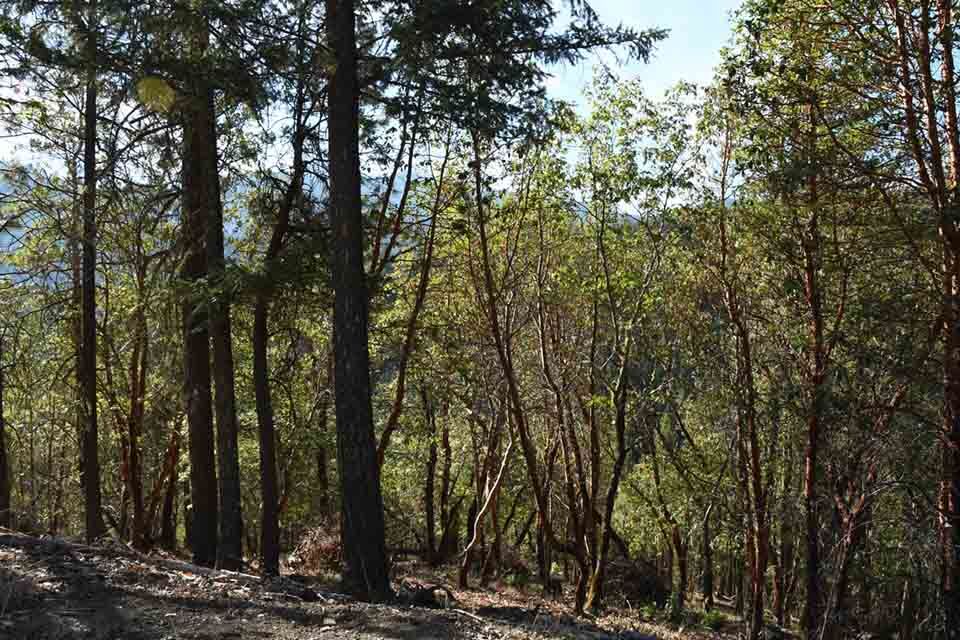Conservationists Oppose “Excessive” Logging in Josephine County Forest – Federal Court Hearing

JOSEPHINE COUNTY, Ore. — The Medford federal court will consider the objections of three conservation groups to the Bureau of Land Management’s (BLM) Integrated Vegetation Management (IVM) logging proposals in forest land near Williams in Josephine County. The hearing is set for next Tuesday, April 2. The conservationists believe the IVM’s tree-cutting proposals in the forest are excessive.
NEW: Tree Sitters Protect Southern Oregon’s Old Growth Forests From The Treetops
Conservationists are objecting to a BLM environmental policy approved in 2022. The policy aims to increase the scope and speed of projects that reduce fire risk, restore forest health, and improve the habitat of classified forest species such as the Northern Spotted Owl. The BLM adopted the environmental policy after consulting with and inviting comments from interested parties.
Read: Oregon Forest’s Habitat Conservation Plan Ready To Move Forward Despite Objections
More Than Half of Southwest Oregon Forests Are Over-Dense and in Need of Restoration
The Acting Field Manager of the BLM Grants Pass Field Office, Vincent Randall, says the forest near Williams needs thinning and fire to reduce its current density. He says 51% of Southwest Oregon forests are over-dense and more in need of restoration than all other forestlands in Oregon and Washington State.
Fifty communities in Oregon have been identified as high-risk wildfire areas, and Williams is ranked 13th on the list.
The proposed BLM project in Josephine County that conservationists are objecting to covers more than 8,300 acres of forestland. Forest management includes commercial thinning, harvest treatments, small-diameter thinning, and prescribed fire. The three conservation groups opposing the BLM project are Cascadia Wild, Klamath Siskiyou Wild, and Oregon Wild.
Randall says the project employs “climate-smart” forestry to strengthen the resilience of land, water, wildlife, and communities in the face of climate change. The plan also includes the protection and growth of old trees with thinning to open tree canopies. The thinning project, says Randall, will provide good growing conditions for the next generation of trees.
Prescribed fire and small-diameter thinning will provide more effective firefighting, while thinning protects forestland trees from insects, drought, fire, and climate change.
Project Will Protect Northern Spotted Owls
The BLM public affairs spokesman, Kyle Sullivan, says the project is designed to protect the Northern Spotted Owl nesting roosting habitat. He says active management is necessary to protect the species living in dry and frequent-fire forests, such as the one near Williams.
Sullivan points out that fire suppression conditions experienced in Southwest Oregon over more than 150 years have created overly dense forests. He says dying and dead trees among the dense forest growth is a recipe for catastrophic wildfires and that forest health is the main reason for the project near Williams in Josephine County.
Conservation Groups Believe Williams Project is “Excessive”
The Cascadia Wild legal director, Nick Cady, says the three conservation groups involved with next week’s federal court hearing are not opposed to everything the BLM project entails, just to areas they believe to be excessive.
Cady says the organizations are not opposed to prescribed burning after tree logging but object to cutting down mature trees and replacing them with newly planted trees that could adversely affect fire resilience. Cady says average wind speeds increase when overhead canopies thin out after existing trees are cut down.
References
